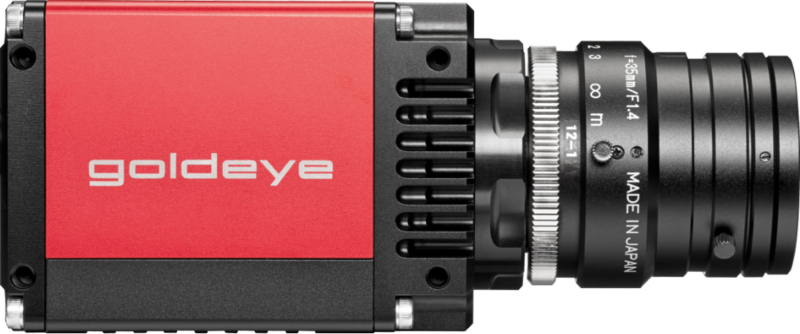IR microscopy with short-wave infrared (SWIR) cameras Goldeye
Silicon wafer is a key component in integrated circuits which have become the principal components of almost all electronic devices. The ability to see through these semiconductor materials offers great benefit to the manufacturing process because infrared images highlight defects such as cracks inside the silicon wafer. Manufacturer of integrated circuits (IC) use Radiant Optronics’ Infrared Imaging Microscopes fitted with Allied Vision’s SWIR camera, Goldeye G-008, to inspect the IC for internal defects or cracks which might happen during the manufacturing process.
The challenge
Silicon cracks jeopardize end-product quality
Wafers accumulates residual stress during the growth, sawing, grinding, etching and polishing process. Cracks may be generated throughout the process, and if undetected, the wafers that survived can be rendered unusable in subsequent manufacturing stages. Cracks may also happen when the integrated circuits are cut into individual IC. Therefore, inspecting the raw material substrate for impurities before processing and detecting defects during processing is critical to keep the costs down.
Silicon has the property to be transparent to infrared light. As a result, Indium gallium arsenide (InGaAs) cameras, operating in the SWIR wavelength band from 900 nm to 1700 nm, allow users to see through semiconductor silicon substrates. The ability to see through these semiconductor materials offers great benefit to the manufacturing process because infrared images highlight defects such as cracks inside the silicon wafer.
With increasing demand of electronics in society, semiconductor fabrication plants and integrated circuit manufacturers are manufacturing higher quantities of wafers and IC to fulfill the demand. The escalating demand is driving the industry to use advanced imaging technologies for quality control. This is critical to keep the costs down.
The solution
Infrared imaging detects cracks inside silicon substrate
Radiant Optronics, a technology company headquartered in Singapore, is specialized in applying the latest technology developments to failure analysis applications with a strong focus in the Semiconductor field, wafer fabrication, service laboratories, packaging and PCB assembly in Asia.
Their Infrared Imaging Microscopes are fitted with Allied Vision’s SWIR camera, Goldeye G-008, to inspect the silicon wafers for defects. Allied Vision’s Goldeye models are short-wave infrared cameras (SWIR) building on high performance InGaAs sensors which are designed to fulfill the highest industrial standards. The Goldeye G-008 is the fastest 1/4-VGA resolution SWIR with GigE Vision interface. With frame rates up to 344 fps at full resolution, versatile application fields can be addressed, and manufacturing processes can be improved tremendously.
The benefits
Reliable support
“The Goldeye G-008 is a low-resolution model with an affordable price. The low resolution is sufficient to detect the defects, so it is the ideal choice for this cost-sensitive application. Our customers can benefit from the Goldeye’s outstanding performance and we enjoy support from Allied Vision’s Asia-Pacific office just next door in Singapore.” stated Christopher Cheong, Director of Radiant Optronics, as further reasons for selecting Allied Vision SWIR cameras.
The camera: Goldeye G-008
Goldeye G-008 delivers best price-performance ratio
The Goldeye G-008 is the fastest 1/4-VGA resolution SWIR with GigE Vision interface offering frame rates up to 344 fps at full resolution.All Goldeye cameras are equipped with an active thermo-electric cooling device (TEC1) to delivery low-noise images regardless of the ambient temperature. Their robust, compact housing with fan-less cooling system provides multiple mounting option for easy system integration.
Highlights at a glance
Fast and reliable detection of defects or cracks which might happen during the manufacturing process.
The affordable price of the Goldeye camera helps to keep the systems costs down.
High framrates allow fast manufactoring processes.
